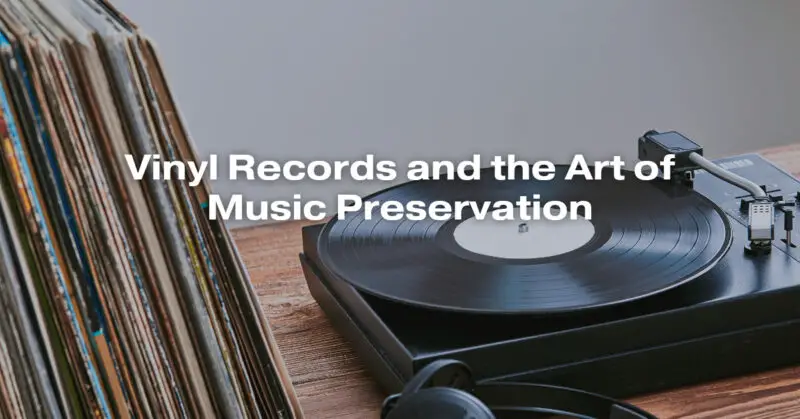Vinyl records have played a significant role in the art of music preservation, contributing to the safeguarding of musical heritage and cultural history. Here are some ways in which vinyl records have contributed to the preservation of music:
- Analog Sound Reproduction: Vinyl records are analog recordings, capturing the original sound waveforms directly. This analog format preserves the nuances, warmth, and depth of the original music, providing a faithful representation of the artist’s intent.
- Historical Recordings: Vinyl records have preserved historical and iconic performances that might have otherwise been lost. Classical music, jazz, and early rock ‘n’ roll recordings, for example, have been preserved on vinyl, allowing future generations to experience the music as it was originally performed.
- Cultural Artifacts: Vinyl records are not just about the music; they are cultural artifacts. Album covers, liner notes, and packaging provide valuable insights into the time period, social context, and artistic vision of the music. These elements contribute to the preservation of cultural history.
- Collector’s Items: Vinyl records often become valuable collector’s items, leading to their careful preservation. Collectors and enthusiasts take great care in storing and maintaining their vinyl collections, ensuring that these musical treasures remain accessible for years to come.
- Niche Genres and Underground Music: Vinyl records have been instrumental in preserving niche and underground music scenes. Independent and underground artists often release their music on vinyl, creating a physical record of their work for fans and future generations.
- Reissues and Remastering: Many classic albums have been reissued on vinyl, often with remastered audio to enhance sound quality. These reissues help introduce new generations to timeless music while preserving the original recordings.
- Longevity: Well-maintained vinyl records can last for decades, if not centuries. Proper storage and handling can ensure that vinyl records remain playable and enjoyable for generations.
- Resurgence of Interest: The resurgence of interest in vinyl in recent years has led to the preservation of old record presses and the development of new ones. This renewed interest has helped maintain the infrastructure needed to produce vinyl records.
- Archiving and Museums: Many music archives and museums house extensive collections of vinyl records. These institutions actively work to catalog, preserve, and digitize vinyl recordings to ensure their accessibility for research and cultural preservation.
- Education and Research: Vinyl records continue to be valuable resources for music education and research. Students, scholars, and musicologists can study vinyl recordings to gain insights into musical styles, historical trends, and performance practices.
While digital formats offer convenience and accessibility, vinyl records remain an essential part of the music preservation ecosystem. They provide a tangible and authentic connection to the past, offering a unique listening experience that goes beyond mere audio playback. The enduring popularity of vinyl records underscores their enduring role in preserving the artistry, culture, and history of music.


